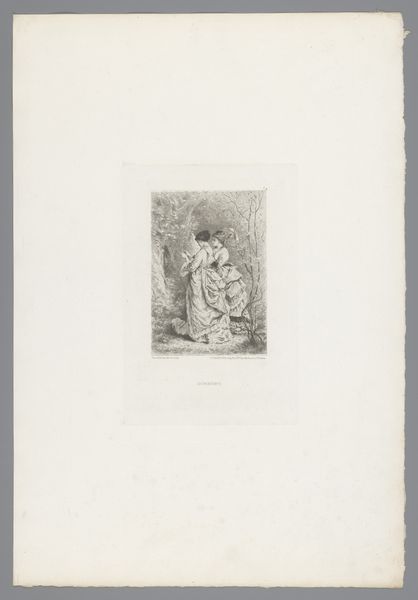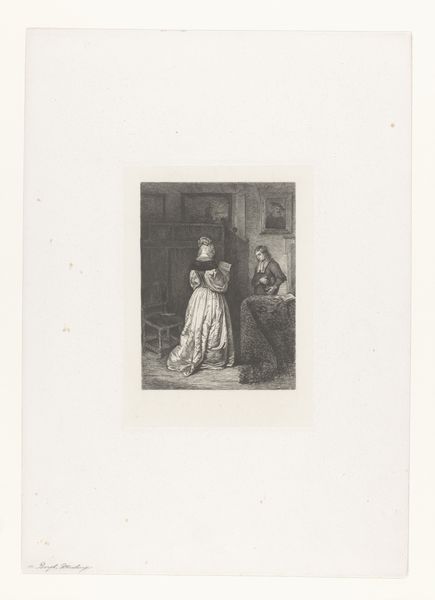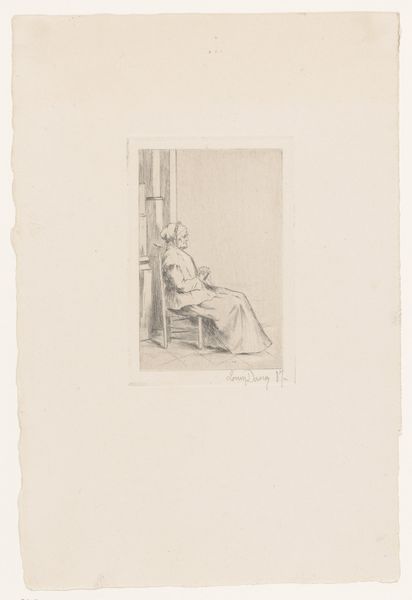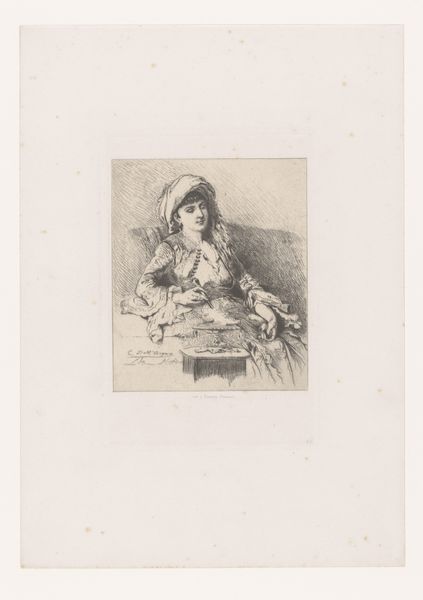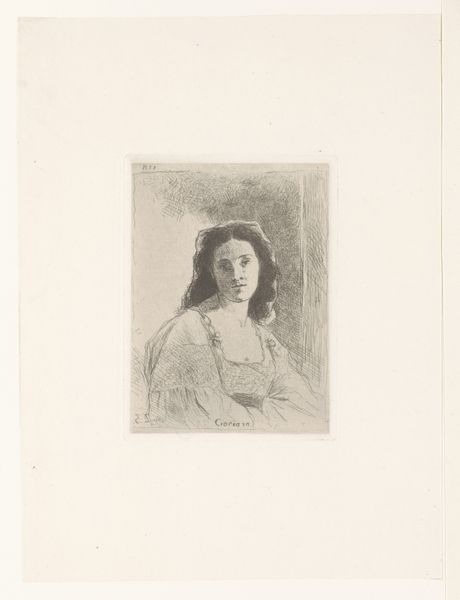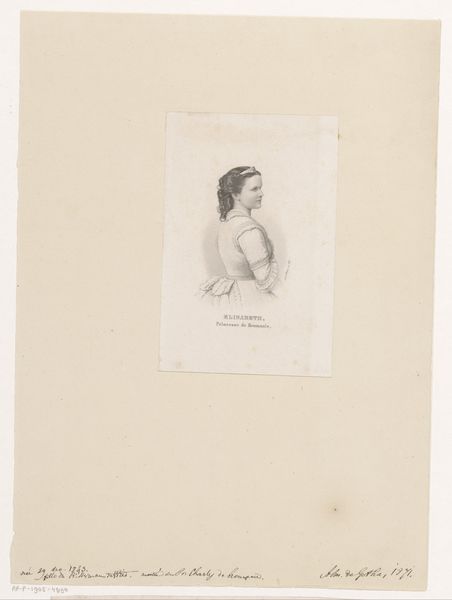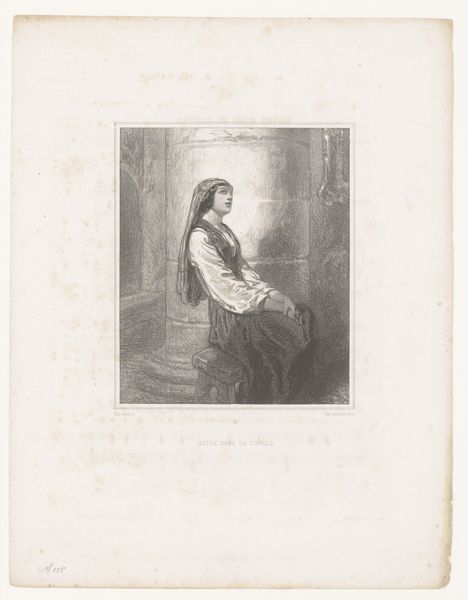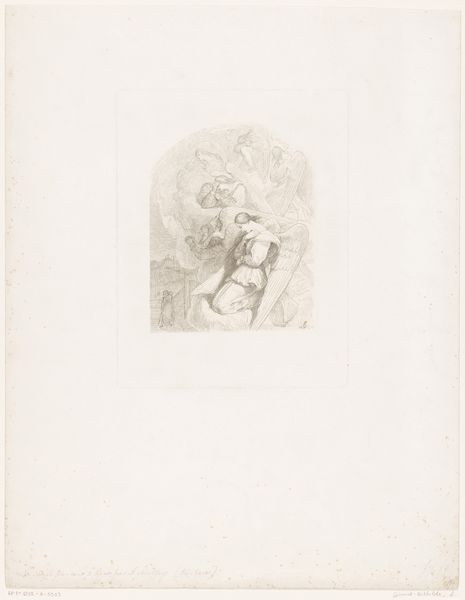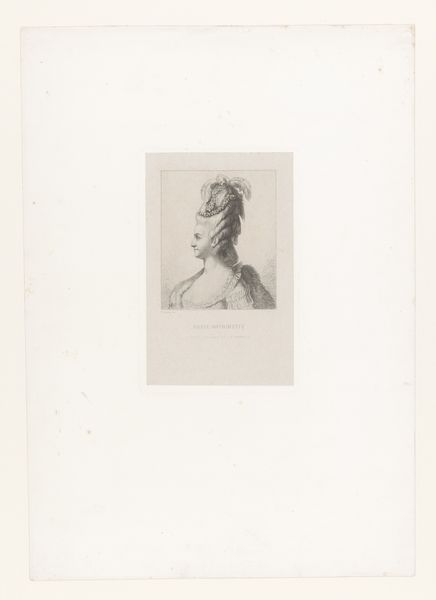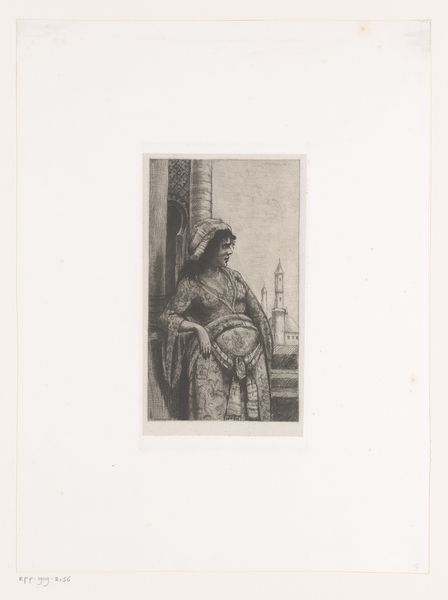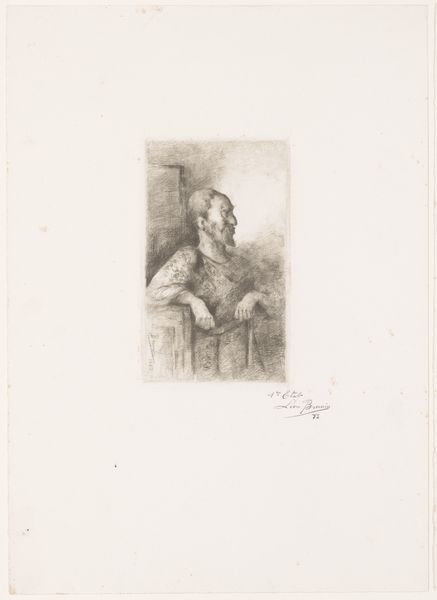
print, etching, paper
#
portrait
# print
#
etching
#
old engraving style
#
paper
#
genre-painting
#
realism
Dimensions: height 156 mm, width 99 mm
Copyright: Rijks Museum: Open Domain
Editor: So, here we have "Gevangene aan geselpaal", or "Prisoner at the Whipping Post," created in 1897 by the Monogrammist JC, using etching on paper. It has quite a somber feel. The composition is simple: a figure illuminated by candlelight, but I'm curious, what jumps out at you? Curator: It's the material story that captivates me. Look at the etching—the acid biting into the metal, a process controlled by the artist’s labor to reproduce this image. Think about the paper too, the methods to produce that very medium. It suggests the social context – prints were more accessible, produced to meet the demands of a wider, consuming audience. Consider what a print like this might have represented to that public, what narratives of crime and punishment they would have absorbed, mediated through the mass production of art. Does it challenge the traditional perception of fine art, by lowering the amount of time it takes to reproduce an image? Editor: That’s a great point. I hadn’t considered how accessible this medium would be and how it allows more viewers access to the work. But what about the image itself; can it hold meaning on its own? Curator: Of course, it does! The realism, the prisoner's posture... However, even that is framed through material means. The artist, Monogrammist JC, used etching techniques available to create this realistic portrayal. Also, this etching exists *because* it's easily copied and reproduced. Editor: So, the technique, materials, and its method of reproduction become a central theme and change our viewing experience. Curator: Precisely. They shaped the artist's decisions and ultimately how the piece communicates its message, how it was consumed. Seeing the value in this simple medium brings forward new questions. What statement did these materials intend to produce for that society and its consumers? Editor: That's given me a lot to think about regarding labor and accessibility and production of the materials. I will have to keep all of that in mind while appreciating and studying other forms of art. Curator: Exactly, and perhaps this piece can shift your whole framework as you analyze different works going forward.
Comments
No comments
Be the first to comment and join the conversation on the ultimate creative platform.


